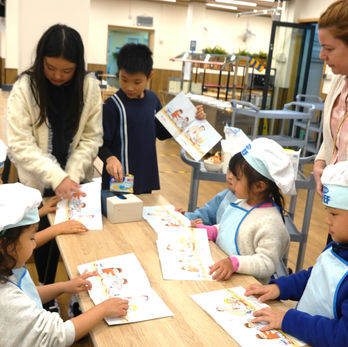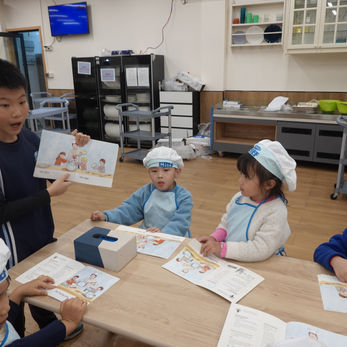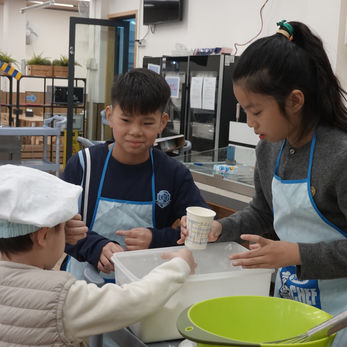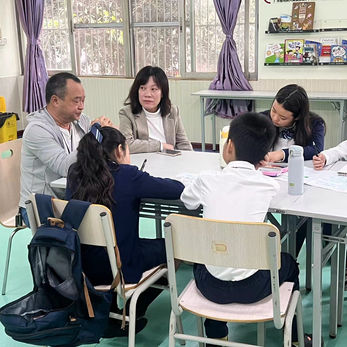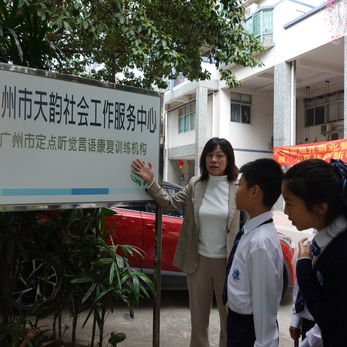ISA TIANHE PYPX 2024

Teaching Styles

Meet The Team
We are Cayden, Hannah, Hugo, and Yvonne. For our PYPX, we want to focus on teaching styles. There are mainly two reasons for choosing this topic. One is that we want to know what teaching styles teachers use to teach us. The other reason is that schools' teaching methods may vary, so we are curious about the impact of different styles on learners.


Our
Central Idea:
Using a variety of teaching styles helps to engage learners.
Our Lines of Inquiry:
1. Teaching styles
2. Learner engagement
3. Related challenges
4. Impact on learners


Knowledgeable
As we learn more and more knowledge, we become more knowledgeable, it's actually connected to thinker.

Balanced
We need to balance the amounts of practical skills and academic knowledge so that we can have a wise education.

Thinkers
We need to think a lot about teaching styles such as the best teaching styles and the quantity of different kinds of teaching styles.
Communicators
If everyone communicate better, the people that have been educated will be more.

Learner Profiles
Key and Related Concepts
1
Form
2
Causation
3
Connection

5
Method & Style
6
Communication
7
Organization
4
Change
Field Trip
During this field trip, we went to a deaf school to see their teaching strategies. Our group, along with Ms. Caroline, Ms. Catherine, Ms. Vera, and Ms. Sylvia went on the trip together.
We thought the environment would be very good, but when we arrived it was like a building! After a while, we met the Head Teacher, Mr. Zhou. First, he took us to visit one of the classrooms and introduced some teachers to us. Mr. Zhou said that they have two types of classrooms, one-to-one classroom, and group classrooms. The one-to-one classroom has one teacher teaching one student, and a group classroom has teachers who teach about 1-9 students in the class. He also explained to us the treatment methods corresponding to different degrees of deafness. For example, milder cases can be treated with a hearing aid, but more severe cases require cochlear implants.
After Mr. Zhou finished taking us to visit his school, we started to ask him questions. The first question is ‘What teaching strategies do you want the teachers to use?’ And Mr. Zhou tells us that every student’s level is all different, so they need different teaching strategies, and he also said the most important two steps, hear and speak, if they can hear and understand, then they can copy to speak. At that time, their treat will be finished. The second question we've not just talk with Mr. Zhou, we also talk with some student’s parents, for example: Is there any challenges that your child cannot do?
Mr. Zhou told us lots of information about their schools teaching methods, every student’s learning level are different, so that they will try many teaching strategies on the student, if one teaching method did not work on them, then the teachers will try other methods, until it works. One thing that I found remarkably interesting is that the teachers also learn how to help the child to be healthy, they also might make them able to hear things.
Every school is different and has their own teaching strategies, deaf schools also have their own methods. The ways people teach are especially important, if you use the wrong teaching strategies, you might destroy children’s future.
The teaching strategy that the deaf school uses is not as hands on as we expect. There are just 5 or 6 children sitting in that room and a teacher teaching them. Also, there were no toys, activities, or interaction between students. We did not expect the answers because we thought there would be more variation in the answers, but the head teacher and class teacher all said the same thing-there is only one way to teach kids to speak. The strategies they use make sense as the way to teach kids to speak and it is very individualized for each student. However, we think they could not incorporate more hands-on learning into their strategies.
“Teaching strategy is the pivotal and pervasive instrument for providing instruction” the famous educator Beck said it in 1998. Teaching strategies are important in bringing desirable changes in learners' behavior in a systematic and well-planned way according to the pre-determined learning goals. Different strategies have unusual characteristics and importance in teaching and learning.



.jpeg)


Our Survey
As part of our research for this project we created a survey for all the teachers in ISA Tianhe.





Hands-on teaching experience
Pancake Reflection
By Hugo & Yvonne
In our research project of teaching strategies, we decided to teach kindergarten students to make pancakes by using a specific teaching strategy – hands on strategy. Compared to the didactic teaching strategy, we believed that the hands on strategy will help students to learn the whole process of making a pancake better and remember all the vocabularies, such as, butter, baking powder and frying pan.
First, we brought them to the school kitchen, where is the field for making a real pancake. We told them to be incredibly careful with the kitchen facility. After everybody sat nicely on the chair, we started to introduce the ingredients for pancakes to the students. As I observed, some of the students knew all the vocabularies already and some of the students knew none, so I repeated the meanings of the vocabularies to the students who have no clues. Then we started showing them the entire process of making a real pancake. We mixed the ingredients and we gave them a chance to stir the pancake by themselves. After that, we popped the mixture in the frying pan. Then we sat on the table with the patient and waited for the pancake to be cooked. After the pancake was done, we ate the delicious pancakes together happily.
Finally, I realized the advantage of the hands on teaching style is instructors can get immediate feedback on the learning. We decided to test how much they could remember the process of making a pancake and the names of the ingredients. This is very important to test if the hands on strategy was suitable for the students in learning specific knowledge of making a pancake. Luckily, all of the students remembered the whole process and the related vocabularies. In my opinion, using hands on strategy is very useful for students to learn, because students involved more during the learning process, and it enables the learning process with lots of fun. In our project, I believed that by using the hands on strategy, students will remember the knowledge much better than using the didactic strategy. Because the hands on strategy involves giving students more responsibility and choice, students are very motivated and engage more in the learning process. By taking ownership of what they want to do, which can help them learn better. However, the limitation of hands on strategy is very time and money consuming, so teachers cannot apply this teaching strategy in all classes.
As a conclusion, each teaching strategy has its own advantages and disadvantages, it is particularly important for the teachers to choose the suitable strategy for students. Different teaching strategies will lead to different learning outcomes, therefore, it is especially important for the teacher to understand their students first, and then choose the right teaching strategy for them.
Pancake Reflection
By Cayden & Hannah
Every school has their own teaching styles, but what if you are teaching Early Years how to cook pancakes, then what teaching styles or how would you teach them? In this reflection, we will talk about three teaching styles that we used for Early Years.
Before we went and picked up Early Years, we thought they would be well behaved, but when we pick them up and say be quiet, they are still talking. After we led the kids to the canteen, we first let the Early Years wear the apron, wash their hands, and started to read books about pancakes. Because they are too small that they cannot really read the words in the books, so we add some action while we read to the Early Years.
After we finished reading the book together about the Early Years, then we met Mr. Ken who would cook pancakes for us, he told me the materials to make pancakes and me how to cook the pancake. When we started adding ingredients, we used a teaching style called Hands-on. We let the Early Years add the ingredients while we taught them how to cook it.
After 5 minutes, our pancakes are ready to eat. There are 3 different things that you can add to the pancake: honey, white chocolate, and white sugar. Every person has their own teaching styles, teaching styles are very important, a little mistake might affect your whole life.
Now we will give you a hands-on learning experience.
Research Essay
Teaching styles
The term education refers to teaching and learning of information. This is conducted through methods in schools or school-like environments rather than different nonformal and informal means of socialization. Malcolm X, a famous American civil rights activist once said, “education is the passport to the future, for tomorrow belongs to those who prepare for it today.” It is believed that education is significant. The aim of education is to make the knowledge we gain from one generation to the next, so that society can develop quickly and continuously. Moreover, it makes sure that the younger generation will obtain the essential skills that will help their future development. According to the website Tophat.com, teaching styles are important in the passing of information because they can help students by being designed to increase student engagement and, ultimately, enhance student outcomes.
After realizing the importance of education in modern society, one question came up into our minds, “what makes education varied among different schools?” Obviously, that is related to the instructor’s teaching style. The instructor’s teaching style is considered as one of the most important factors that contribute to the quality of education. Different teaching styles may lead to different learning outcomes. Therefore, choosing a suitable teaching style is the key to improving teaching quality. But if the instructor doesn’t choose the appropriate style for their learners, then the learners won’t be motivated and therefore might not want to listen or engage. When parting information, it is especially important to gain the learners’ attention and encourage as much engagement as possible from them. This can only be achieved by delivering interesting lessons that gain learners’ attention, most people will argue that lessons need to be motivating and relative to the students. By delivering lessons, a teacher may select different teaching styles according to unit topic, grade level, class size, and classroom resources. Teaching styles play a significant role in classroom instruction. Without a sensible teaching style, teachers would be thoughtlessly producing information that does not connect with learners or engage them. Teaching styles help learners take part, connect, and add excitement to the content being delivered. But the best thing is that it encourages students to become actively engaged with the material and helps them develop critical thinking skills. The suitable teaching style also builds creativity and innovation among students.
According to the website Tophat.com, Teaching styles are the general principles, educational guidelines and management techniques used when instructing students. There are many different teaching styles, and we would like to go in-depth to describe three of them. In this paragraph, we will write about these three methods: Hands-on, Lecturer and Demonstrator. The first one, also the easiest one, is commonly known as a lecture method. The lecture method, also known as the transmissive method, is based on vertical learning. It provides several key advantages, such as enabling instructors to efficiently cover enormous amounts of material for many students. However, it also lists important disadvantages, such as lectures not actively engaging students or providing feedback on learning, potentially resulting in low retention of information. The second method is the Demonstrator method, this is a style in which the instructor shows how to do something to the students. This could be done using actual objects, models, or photographs. It is designed to encourage students to think critically, solve challenging problems, and develop important skills and work habits, but it is only suitable for technical and training skills subjects. The final method is Hands-on, also known as deductive. Hands-on teaching means teaching by doing. This type of teaching is best suited for kinesthetic learners, who learn through doing. It is an especially useful teaching method, but a lot of schools do not use it, because most of the schools don't have enough resources to give to the students and this method takes a lot longer to plan and prepare for.
Effective use of teaching styles brings positive learning outcomes in the students. It gives scope for teachers to think seriously and intelligently about their own practices inside and outside the classrooms. It helps produce interest in students, promotes deep and long–lasting learning, and helps students achieve their goals – both personal and academic. We know that effective teachers can be hugely influential figures to many young people, providing them with both certainty and importance when they need it the most. Not just the teaching strategies, learning strategies are important too. Learning strategies are particularly important for helping students to relief road their areas of weakness and to rely on their areas of competence. Therefore, as teachers we must all think about our styles of teaching as we plan for future lessons.
As a conclusion, a good education or a good teaching style can bring about a bright future for students. Every student is different so teachers should not always use the same styles and should adapt their methods to accommodate different learning styles. Using effective teaching styles is vital for students’ education. When the correct style is used, it can help students engage with their learning, retain information, and be more motivated. Effective use of teaching styles brings positive learning outcome to the students. Teaching style plays a significant role in classroom instruction. Teaching styles help learners take part, connect, and add excitement to the content being delivered. It helps produce interest in students, promotes desire for long–lasting learning, and helps students achieve their goals – both personal and academic. Without a style, teachers would be thoughtlessly projecting information that does not connect with learners or engage them. Imagine what a difference it would make if educators thought about teaching styles deeply when planning lessons!
Action
After all our research on teaching styles, we decided that our action would be to give gentle reminders to teachers that when they are planning for lessons, they must take teaching styles into consideration. We did this via the production of posters and bookmarks that were presented to the teachers.




Yvonne
I have made contributions to our team by assigning tasks and managing time wisely. I always make sure each team member has their own task to complete. The most challenging part of this project is the essay. I think we can make improvements by reflecting more on our works.
Hannah
Throughout the process, I have been coming up with many ideas about our project. I have also contributed to the team by doing research.
Cayden
I had search many informations, my group mates will me support me how to make it in my own words.
Hugo
this exhibition process i contributed the 5 part essay and the pancake reflection and more about the reasearch.
Group Gallery
Bibliography
Throughout our research process, we consulted a wide range of sources, please see the list below:
Burton.C,(June 29, 2022),The 5 most effective teaching styles https://www.thinkific.com/blog/teaching-styles/
Cullen.E,(March 08, 2023), 9 Ways to Keep Students Engaged in 2023https://www.mentimeter.com/blog/interactive-classrooms/10-ways-to-keep-students-engaged-in-2020
Nicol.D,(1950), McKeachie's teaching tips, Cengage Learning
Hoberman.M,(December 4 2017), Highly Effective Teaching Strategies, Dav Johnson
Robert J. Harder,(1980), Teaching Strategies, abby brown
Andrew P. Johnsonm,(2017), Teaching Strategies for All Teachers, Sam J Spier








